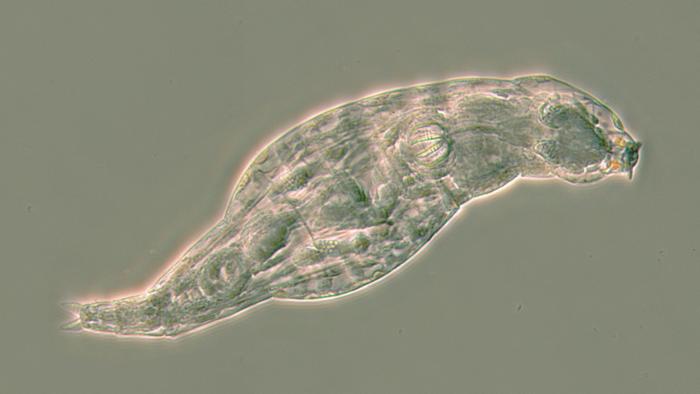Researchers have discovered that bdelloid rotifers, microscopic freshwater animals, use genes acquired from bacteria to produce their own antibiotics. This finding, published in Nature Communications, reveals a unique defense mechanism against infections and could lead to new avenues for antibiotic development.
Rotifer’s Genetic Theft: A Survival Strategy
Bdelloid rotifers, also known as “wheel animals” due to their circular mouth parts, are smaller than the width of a human hair. Despite their tiny size, these creatures have developed a remarkable survival strategy. Over millions of years, they have been picking up DNA from their environment, including genes from bacteria and other microbes.
Chris Wilson, lead author from the University of Oxford, explains: “When we translated the DNA code to see what the stolen genes were doing, we had a surprise. The main genes were instructions for chemicals that we didn’t think animals could make — they looked like recipes for antibiotics.”
This genetic acquisition is not just a curiosity; it serves a vital purpose. When exposed to fungal infections, rotifers activate hundreds of these borrowed genes, some of which produce antibiotics and other antimicrobial agents. In effect, these tiny animals have developed their own pharmaceutical factory.
Implications for Antibiotic Research
The discovery of rotifers using bacterial genes to produce antibiotics could have significant implications for medical research. David Mark Welch, senior scientist at the Marine Biological Laboratory, notes: “This raises the potential that rotifers are producing novel antimicrobials that may be less toxic to animals, including humans, than those we develop from bacteria and fungi.”
This finding is particularly timely given the growing concern over antibiotic resistance. The World Health Organization recently highlighted the “pressing need” to develop new antibiotics to counter the threat of resistant microbes. Rotifers could provide valuable insights in this quest.
The genes acquired by rotifers encode enzymes that assemble amino acids into small molecules called non-ribosomal peptides. These peptides often have antibiotic properties. Irina Arkhipova, a senior scientist at the Marine Biological Laboratory, suggests that the next phase of research should focus on identifying these peptides and understanding the conditions that induce their synthesis.
Why it matters: The discovery of rotifers producing their own antibiotics using stolen bacterial genes is significant for several reasons. First, it provides a new perspective on the evolution of antibiotic resistance and production in nature. Second, it could lead to the development of new, potentially less toxic antibiotics for human use. Finally, it demonstrates the remarkable adaptability of life, even at microscopic scales.
One intriguing aspect of this research is the connection between the rotifers’ unique reproduction method and their gene acquisition. Bdelloid rotifers reproduce asexually, with mothers laying eggs that hatch into genetic copies of themselves. Tim Barraclough, a study co-author from the University of Oxford, suggests that this could explain why rotifers have borrowed so many genes from other organisms: “If rotifers don’t find a way to change their genes, they could go extinct. This might help explain why these rotifers have borrowed so many genes from other places, especially anything that helps them cope with infections.”
While this research is promising, many questions remain. How exactly do rotifers incorporate these foreign genes into their genome? Are there other animals that use similar strategies? Could this mechanism be harnessed for medical purposes?
Looking ahead, this study opens up exciting new avenues for research. As we continue to grapple with the challenge of antibiotic resistance, nature-inspired solutions like those found in bdelloid rotifers could play a crucial role. Future studies may focus on identifying and synthesizing the specific antibiotics produced by rotifers, potentially leading to new classes of antimicrobial drugs.
The story of bdelloid rotifers and their stolen genes serves as a reminder of the incredible complexity and adaptability of life. It also underscores the importance of studying even the smallest organisms, as they may hold the key to solving some of our most pressing medical challenges.


